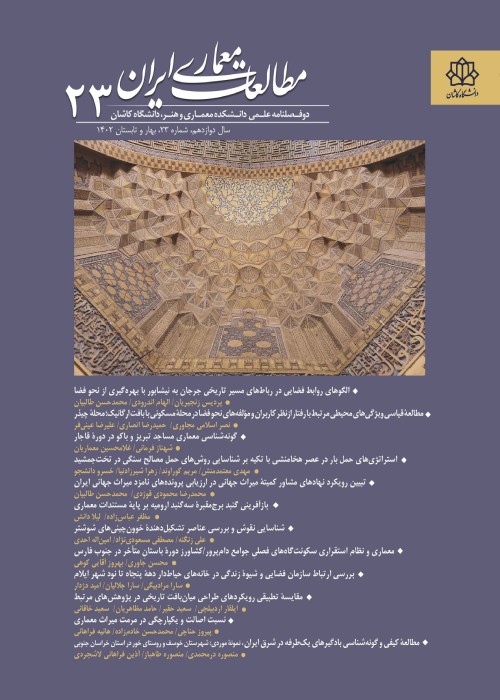Documenting and Conserving the Vegetation of Historical Gardens, Case Study: Fin Garden
Author(s):
Abstract:
Vegetation is the important part of a historical garden; so that، by destroying it، it''s impossible to call the historical site a «Garden». In Persian gardens، the plants have special importance، since in many references the methods of planting in garden are specifically described. Whereas garden''s vegetation is a mortal element and its replacement and restoration is not easily possible، so documenting them as the live historical elements of the garden is necessary. Therefore، the main goal of this research is presenting a method of collecting and arranging the data of historical garden''s vegetation، as a documenting plan، in which during the introduction of every tree separately، it is possible to manage the plants of garden in micro scale for every tree. The subject of conserving historical gardens، are also emphasized in International Charters. In Florence Charter، known as «Historical Gardens Charter» (approved in December 1982- ICOMOS)، the classes of the plants as the part of architectural composition of the garden is mentioned. The first step for documenting all of the trees، in order to record the condition of plants in a particular time، is to provide a vegetation map of the garden by field surveying. The next step is defining a format for recording the collected data. The information like scientific name of the trees، their age، height and width have to be recorded in this format. Some parts of the information are recorded as graphic data (pictures and schematic drawings) to have more accurate planning for the garden. In this research، Fin Garden has chosen because of its importance in Persian Gardens. The garden vegetation map was taken from relevant resources، and it is corrected due to the whole changes occurred in many years. All of the trees were coded، according to their scientific name and location. It''s necessary to choose a unit format for collecting and compilation the documents of the garden، due to the amount of data. Therefore، the format of documenting the gardens'' trees is prepared by field surveying and using experts'' experiences. For filling in the documenting form، pictures were taken from every tree in different angles، and schematic plan and facade of every tree were drawn. Morphological characteristic of every tree was recorded during field surveying and filling in the form، as well as the location data of the trees. As the final step for easy access and ability to update the information، the collected data was designed in a software format.
Keywords:
Language:
Persian
Published:
Journal of Iranian Architecture Studies, Volume:4 Issue: 7, 2015
Page:
57
magiran.com/p1440651
دانلود و مطالعه متن این مقاله با یکی از روشهای زیر امکان پذیر است:
اشتراک شخصی
با عضویت و پرداخت آنلاین حق اشتراک یکساله به مبلغ 1,390,000ريال میتوانید 70 عنوان مطلب دانلود کنید!
اشتراک سازمانی
به کتابخانه دانشگاه یا محل کار خود پیشنهاد کنید تا اشتراک سازمانی این پایگاه را برای دسترسی نامحدود همه کاربران به متن مطالب تهیه نمایند!
توجه!
- حق عضویت دریافتی صرف حمایت از نشریات عضو و نگهداری، تکمیل و توسعه مگیران میشود.
- پرداخت حق اشتراک و دانلود مقالات اجازه بازنشر آن در سایر رسانههای چاپی و دیجیتال را به کاربر نمیدهد.
دسترسی سراسری کاربران دانشگاه پیام نور!
اعضای هیئت علمی و دانشجویان دانشگاه پیام نور در سراسر کشور، در صورت ثبت نام با ایمیل دانشگاهی، تا پایان فروردین ماه 1403 به مقالات سایت دسترسی خواهند داشت!
In order to view content subscription is required
Personal subscription
Subscribe magiran.com for 70 € euros via PayPal and download 70 articles during a year.
Organization subscription
Please contact us to subscribe your university or library for unlimited access!


